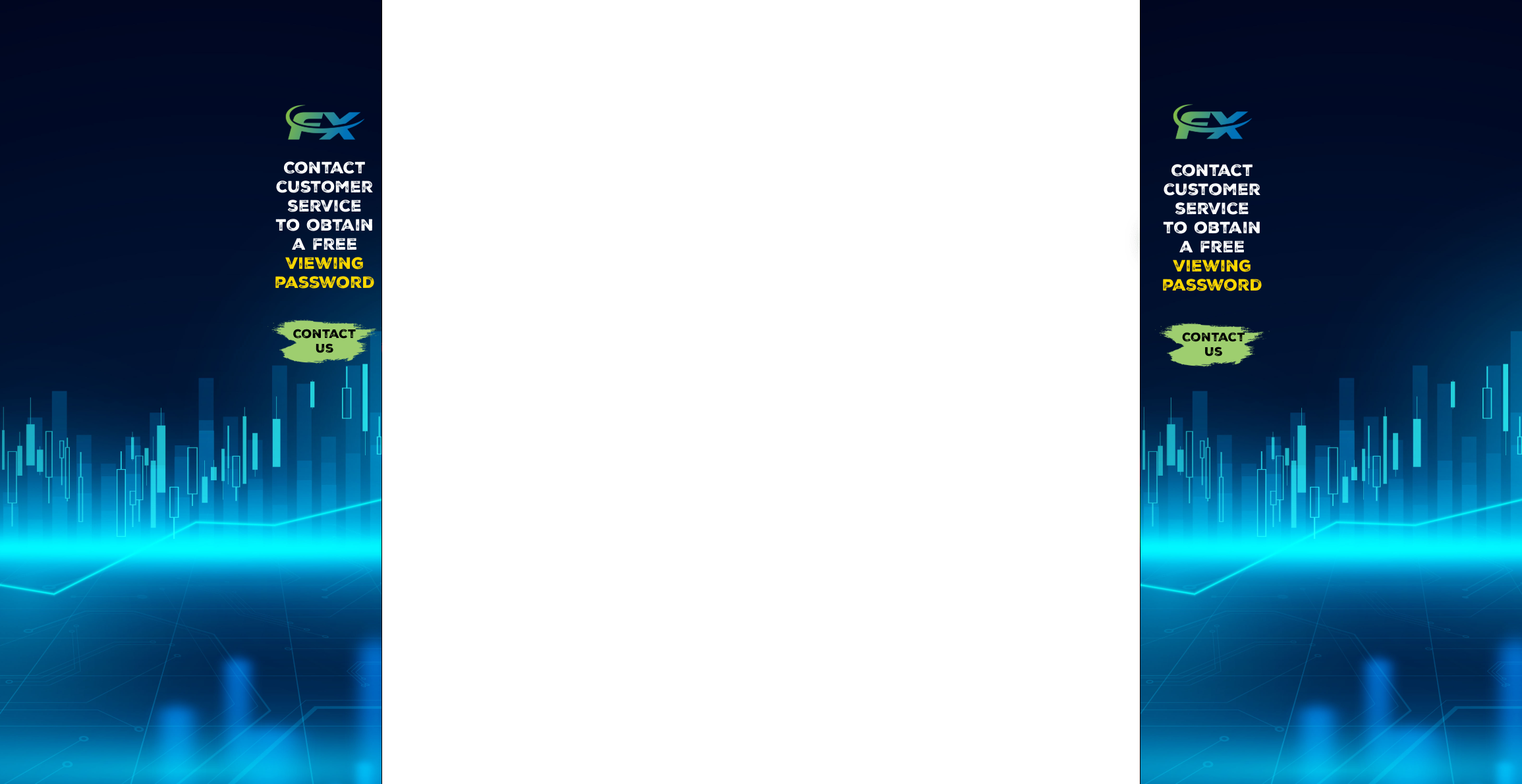Getting started with currency trading has become a growing interest for many individuals in India looking to explore global financial markets. Forex trading in India is gaining momentum as more traders seek opportunities beyond traditional equities and commodities. With increasing awareness and access to international platforms, understanding how to legally and effectively participate in forex markets is essential. From compliance with national regulations to choosing the right tools and strategies, every step plays a critical role in building a strong foundation for trading success.
Legal Foundations and Regulatory Environment
Understanding the legal framework is the first essential step for anyone interested in forex trading in India. Regulatory clarity ensures safer participation and helps avoid penalties or platform bans.
Role of RBI and SEBI in regulating forex trading in India
Forex trading in India operates within a tightly regulated ecosystem overseen by the Reserve Bank of India (RBI) and the Securities and Exchange Board of India (SEBI). These bodies ensure compliance with monetary policies and safeguard against capital flight.
RBI controls how foreign exchange flows in and out of the country under the Foreign Exchange Management Act (FEMA).
SEBI regulates currency derivatives traded on recognized Indian exchanges like NSE and BSE.
Direct forex trading with platforms not registered with SEBI or through unauthorized means is considered illegal.
Permitted currency pairs like USD/INR and EUR/INR can be traded only through SEBI-registered brokers.
This strict control ensures that forex activity aligns with national economic interests and monetary policy integrity.

FEMA guidelines and restrictions on forex speculation
The Foreign Exchange Management Act is central to regulating cross-border currency transactions. It outlines what Indian residents can and cannot do in the global forex market.
FEMA permits only hedging or trading through exchange-traded currency derivatives on Indian platforms.
Leveraged speculation in forex through international brokers is prohibited.
FEMA restricts margin trading unless routed through Authorized Dealer (AD) banks.
Indian traders can access pairs like GBP/INR and JPY/INR only through legal channels, with derivatives like currency futures and options regulated under Indian law.
Violating FEMA could lead to prosecution, account freezes, and heavy fines, making compliance non-negotiable for residents.
What are Authorized Dealer (AD) banks and their relevance
Authorized Dealer (AD) banks play a pivotal role in legal forex trading in India. These are institutions approved by the RBI to facilitate foreign exchange transactions for residents and businesses.
| Feature | Details |
|---|---|
| Definition | Commercial banks authorized by the RBI to deal in foreign exchange |
| Purpose | Facilitate legal transactions involving forex transfers, trade, and remittances |
| Services Provided | Currency conversions, outward remittance, inward remittance, compliance check |
| Examples | SBI, HDFC Bank, ICICI Bank, Axis Bank |
| Forex Account Integration | Link required between trading account and AD bank for legal fund movement |
| Compliance Monitoring Role | Ensures transactions align with FEMA and RBI policy |
These banks act as intermediaries between traders and the global financial system, bridging compliance and execution. Whether trading forex futures or simply sending funds abroad, routing through an AD bank ensures legality.
Differences between legal forex trading and illegal platforms
The contrast between permitted forex trading and unauthorized practices is sharp and significant. Understanding these differences protects Indian traders from scams and legal issues.
Legal trading occurs through SEBI-regulated platforms offering pairs like USD/INR or CHF/INR as exchange-traded derivatives.
Illegal platforms typically offer high-leverage access to pairs like AUD/INR or NZD/INR through foreign brokers, bypassing FEMA rules.
Legal instruments include spot forex via AD banks, forex futures, and options within exchange limits.
Unregulated brokers often operate via mobile platforms or web-based platforms with offshore registration, making investor protection negligible.
Reporting and taxation on legal trades are traceable, while illegal forex activity can trigger audits, fines, and cyber risk exposure.
Awareness of these distinctions can make the difference between secure participation and severe financial repercussions.
Setting Up a Forex Trading Account
Opening a forex trading account in India involves navigating compliance, technology, and banking frameworks. Forex trading in India begins with aligning every step to the legal and financial structure set by regulatory bodies.
Choosing SEBI-authorized online forex brokers
Select brokers regulated by the Securities and Exchange Board of India (SEBI) to ensure compliance with FEMA.
Look for brokers offering INR-denominated currency pairs such as USD/INR and EUR/INR.
Prioritize platforms providing MetaTrader 4 or MetaTrader 5 access for seamless charting and analysis.
Ensure the broker supports linkage to Authorized Dealer (AD) banks for legal fund transfer.
Verify the availability of trading instruments like currency derivatives and forex options through Indian exchanges.
Documentation required for Indian residents
Proof of Identity – Aadhaar card, PAN card, or passport
Proof of Address – Utility bill, bank statement, or rental agreement
Bank Account Proof – Cancelled cheque or latest account statement
Income Proof – ITR, salary slips, or bank income documents for margin account approvals
Self-declaration – Confirmation of compliance with RBI regulations and FEMA guidelines
Submission must be digital and compliant with KYC norms governed by RBI and SEBI. Verifying documentation ensures eligibility to access online forex brokers operating under Indian law.
Steps to register on trading platforms like MetaTrader 4 & 5
Step 1: Select a SEBI-licensed forex broker with MT4 or MT5 compatibility
Step 2: Complete online KYC verification and submit documentation
Step 3: Choose a trading account type: demo or real
Step 4: Set up login credentials and connect trading account to desktop or mobile platform
Step 5: Integrate technical analysis tools or indicators for strategy deployment
Step 6: Initiate trading in approved currency pairs like GBP/INR, JPY/INR, or SGD/INR
These steps help in building a secure base for strategy testing and position trading using professional-grade tools.
Linking your account with an Authorized Dealer bank
Integrating your forex trading account with an Authorized Dealer (AD) bank ensures adherence to India's capital controls. These banks regulate foreign exchange outflows and enable legal fund transfers under FEMA.
| Parameter | Details |
|---|---|
| Bank Type | RBI-authorized banks such as HDFC, SBI, ICICI |
| Purpose of Linkage | Legal compliance, currency remittance, and trading settlement |
| Accepted Transactions | Funding forex accounts, receiving derivative payouts |
| Documentation Required | KYC, bank mandate, FEMA compliance declaration |
| Trading Instruments Enabled | Spot forex, forex futures, ETFs, currency forwards |
| Compliance Function | Ensures trade flow matches FEMA guidelines |
These linkages enable Indian traders to legally execute positions in currency pairs like AUD/INR and CAD/INR using bank-cleared platforms.
Account funding methods and transaction limits for Indians
Account funding options vary by platform and are tightly controlled under RBI's exchange control regulations. Limits exist to prevent unauthorized foreign currency exposure.
Net banking and NEFT/RTGS transfers from AD bank accounts are the primary legal methods.
Credit card transfers to offshore forex platforms are prohibited.
Annual limit for Liberalized Remittance Scheme (LRS) is capped at USD 250,000 for residents.
Forex options and futures traded on Indian exchanges have contract-specific margin requirements.
Leverage caps and transaction ceilings are set by SEBI and enforced via AD bank validations.
Adhering to these guidelines ensures lawful participation without breaching FEMA restrictions.

Forex Trading Platforms and Tools
Efficient execution in forex trading in India begins with choosing the right tools. Platforms and apps now determine how traders interact with global currency pairs, from USD/INR to GBP/INR.
Mobile vs desktop forex trading apps in India
Mobile platforms offer flexibility for traders on the move, allowing order placement and real-time charting with limited screen space.
Desktop platforms like MetaTrader 4 offer deeper analytics, supporting technical analysis and advanced forex indicators.
Mobile trading apps are best suited for swing trading and quick news trading responses, especially when tracking interest rate movements or economic releases.
Desktop tools support scalping and position trading strategies through high-speed execution and multi-window customization.
Overview of MetaTrader 4 and MetaTrader 5
MetaTrader 4 and MetaTrader 5 have become industry standards across online forex brokers in India. Both platforms offer customizable tools, though MT5 supports more trading instruments, including forex futures and currency derivatives.
MT4 is optimized for technical analysis, scalping, and compatibility with automated bots.
MT5 adds economic indicators like GDP data and CPI calendars directly into the platform.
Both support trading of approved INR pairs through SEBI-registered brokers.
Whether analyzing EUR/INR or AUD/INR, MT4 and MT5 offer robust environments tailored to multiple strategies.
Using web-based platforms for cross-device trading
Web-based platforms offer convenience and device independence, especially for Indian traders seeking access without constant installations.
Login via browser across devices — laptops, tablets, and mobile
Cross-syncs data including technical indicators and open positions
Supports spot forex, ETFs, and forex options on regulated pairs
Platform security managed through two-step authentication and AD bank-linked withdrawals
Reduced system resource usage compared to desktop platforms
Ideal for traders balancing day jobs and markets across time zones.
How demo accounts help beginners learn
Demo accounts offer a safe environment for Indian residents to understand currency markets, trading instruments, and risk factors.
By simulating real-world forex environments, these accounts enable traders to:
Practice executing trades in USD/INR or GBP/INR without risking funds
Understand market volatility, leverage risk, and order execution speed
Test technical analysis strategies and trading plugins
Gain hands-on experience with trading apps and MetaTrader setups
Evaluate the performance of currency forwards and spot forex positions
Beginners can use demo setups offered by SEBI-compliant online forex brokers, transitioning smoothly into live accounts.
Interface comparison between international and Indian brokers
| Feature | Indian Brokers | International Brokers |
|---|---|---|
| Regulatory Oversight | SEBI, RBI, FEMA | Offshore regulations, non-SEBI |
| Currency Pairs Offered | INR-based (USD/INR, EUR/INR, JPY/INR) | Global majors and exotics |
| Leverage Allowed | Capped as per SEBI norms | Higher leverage (often >100:1) |
| Trading Instruments | Currency derivatives, ETFs | Spot forex, CFDs, options |
| Integration with AD Banks | Mandatory | Not supported |
| Interface Features | Focused on compliance, fewer add-ons | More custom indicators and layouts |
Indian traders benefit from strong regulatory protection but limited tools. International platforms offer greater features but lack legal standing under Indian law.
Custom indicators and trading plugins
Custom indicators expand analytical capabilities, helping traders identify market trends and manage risk more effectively. These are often integrated with MetaTrader 4 or MetaTrader 5 platforms.
Indicators like Bollinger Bands and RSI are frequently modified to suit local pairs such as CHF/INR and CAD/INR.
Plugins assist with automated order execution, particularly for scalping and news trading.
Risk assessment plugins factor in leverage risk, economic risk, and market volatility.
AD bank transaction plugins can link withdrawal alerts to bank accounts.
Integration with trading strategies like technical analysis enhances efficiency in real-time markets.
Advanced users often combine these tools to refine positions across forex options and forwards.
Currency Pairs and Market Access
Forex trading in India centers around approved INR-based currency pairs and regulated market instruments. These channels define how Indian traders legally access international currencies.
Most commonly traded INR pairs: USD/INR, EUR/INR, GBP/INR
USD/INR is the most liquid and actively traded pair in India, with deep integration into both spot forex and futures markets.
EUR/INR provides access to the Eurozone’s economic dynamics and is ideal for traders tracking interest rate trends and CPI changes.
GBP/INR is popular among those responding to news trading strategies tied to the UK’s political and economic shifts.
These pairs are offered via SEBI-regulated online forex brokers and traded through platforms like MetaTrader 5.
Margin requirements and leverage settings are capped as per RBI and SEBI compliance, reducing exposure to excessive trading risks.
These regulated pairs provide legal entry points while aligning with FEMA guidelines and Authorized Dealer (AD) bank fund flows.
How global events affect specific forex pairs
When geopolitical shifts or economic shocks ripple through the world, INR-based forex pairs respond with measurable volatility. A rate hike by the US Federal Reserve typically strengthens the USD, causing a movement in USD/INR, while a Eurozone economic downturn often weakens EUR/INR. Trade balance figures from the UK influence GBP/INR, and major oil price swings can create knock-on effects for CAD/INR due to Canada’s energy exports.
Forex futures and options linked to these pairs become highly sensitive during events like national elections, inflation announcements, or international conflicts. This volatility opens opportunities for position trading and scalping, while also increasing exposure to market and leverage risk.
Understanding these relationships is key to developing strategy frameworks that balance risk and reward across varying timeframes.
Accessing currency derivatives and ETFs in Indian exchanges
| Instrument Type | Availability | Regulatory Oversight | Key INR Pairs | Trading Platform |
|---|---|---|---|---|
| Currency Futures | NSE, BSE | SEBI, RBI | USD/INR, EUR/INR, GBP/INR, JPY/INR | MetaTrader 5, Mobile apps |
| Currency Options | BSE | SEBI, FEMA | Primarily USD/INR | Web-based platforms |
| Currency ETFs | Limited availability via mutual funds | SEBI | Currency baskets with INR exposure | Online forex brokers |
| Currency Forwards | Offered via AD banks | FEMA, RBI | Custom contracts with INR pairing | AD bank-linked accounts |
Indian traders gain legal market access through these channels, which are closely monitored by regulatory bodies like the Reserve Bank of India and SEBI. These instruments offer a balance between exposure, liquidity, and compliance when trading forex in India.

Forex Trading Strategies for Indian Traders
Applying the right trading strategy is crucial for navigating forex trading in India. These methods combine tools, timing, and economic cues tied to INR-based currency pairs.
Technical analysis tools suited for INR pairs
Bollinger Bands help capture market volatility in USD/INR and EUR/INR movements
Moving Average Convergence Divergence (MACD) is useful for swing trading signals in JPY/INR
Relative Strength Index (RSI) assists in timing entries for scalping AUD/INR and SGD/INR
Fibonacci retracement levels align well with price behavior during budget announcements and RBI rate changes
Ichimoku Cloud helps identify breakout points in volatile GBP/INR sessions
These indicators are widely supported on MetaTrader 4 and MetaTrader 5 platforms and are best used alongside news trading and economic event calendars.
Fundamental analysis with India-specific economic indicators
Indian forex traders increasingly lean on economic signals to guide decisions. CPI, interest rates, and trade balance data drive daily volatility across currency derivatives and spot forex trades.
| Economic Indicator | Impact on INR-Based Currency Pairs | Release Frequency | Relevant Instruments |
|---|---|---|---|
| Consumer Price Index (CPI) | Higher CPI may weaken INR vs USD/INR, boost forex futures volatility | Monthly | Currency futures, forex options |
| Gross Domestic Product (GDP) | Positive GDP strengthens INR across CHF/INR, GBP/INR | Quarterly | ETFs, spot forex, currency forwards |
| Interest Rates (RBI policy) | Hikes may lead to INR appreciation against AUD/INR, CAD/INR | Bi-monthly | Spot forex, currency derivatives |
| Trade Balance | Deficits typically pressure INR against EUR/INR | Monthly | Exchange-traded funds, position trades |
| Purchasing Managers' Index | Reflects market sentiment, short-term impact on JPY/INR, SGD/INR | Monthly | Intraday forex strategies, scalping tactics |
These indicators help traders time positions while staying within the framework of SEBI-regulated platforms and FEMA-compliant practices.
Swing trading vs scalping in the context of Indian time zones
Swing trading and scalping both offer advantages for Indian residents, but their effectiveness depends on timing, volatility, and currency choice.
Swing traders focus on medium-term trends using technical indicators on desktop platforms like MetaTrader 5. They often trade GBP/INR or CAD/INR, holding positions for a few days to capitalize on macro shifts like inflation or RBI announcements.
Scalping favors real-time trading apps and ultra-short trade windows. USD/INR and EUR/INR are favored during market overlaps between NSE hours and European trading hours. Scalpers rely heavily on liquidity and news trading, often reacting to interest rate updates or GDP reports.
Each style suits different personalities and risk appetites, and both benefit from strong analytical tools and a stable connection to SEBI-authorized online forex brokers.
Impact of inflation, GDP, and interest rate changes on forex
Inflation, GDP growth, and interest rate policy are core drivers of currency valuation. In the Indian context, they hold even more significance due to their close ties to RBI policy and market sentiment. When inflation rises above expectations, the INR often weakens, pushing USD/INR higher. Strong GDP data can cause a rally in INR pairs like EUR/INR and CHF/INR, especially when paired with stable external conditions.
Interest rate decisions create immediate spikes in spot forex and currency futures. A rate hike can lead to short-term strength in INR, while dovish signals from the RBI may trigger selling pressure. Traders using fundamental analysis and technical tools together can exploit these fluctuations across trading instruments like currency options, ETFs, and forwards.

Day trading risks with INR-denominated pairs
High market volatility during macroeconomic announcements like CPI and PMI
Intraday spreads on pairs such as GBP/INR can widen suddenly, reducing profit margins
Liquidity issues during off-peak NSE hours may cause slippage
Exposure to leverage risk when trading with tight stop-losses
Emotional decision-making amplified by short timeframes and overtrading tendencies
Mitigating these risks involves setting realistic targets, managing position size, and adhering strictly to risk-reward ratios. Day traders must stay alert to currency pair behavior and unexpected global triggers.
Position trading during high market volatility periods
Position trading offers a strategic buffer against short-term fluctuations in high-volatility phases. When the forex market reacts sharply to global uncertainty—such as trade wars or oil price instability—Indian traders often use this method with currency forwards or ETFs.
By focusing on long-term directional trends in USD/INR, CAD/INR, or AUD/INR, traders are less influenced by daily volatility or intraday noise. Tools like fundamental analysis, moving averages, and interest rate forecasting help position traders stay anchored. Trades are often routed through AD bank-linked accounts, supporting regulatory compliance while maximizing exposure to major forex moves.
This approach requires patience and consistent monitoring of macroeconomic indicators across multiple timeframes.
Managing Risks in Forex Trading
Sound risk management defines long-term success in forex trading in India. Strategies must balance return potential with risks tied to leverage, liquidity, and economic shifts.
Understanding leverage risk in forex accounts
Leverage amplifies both profits and losses; excessive use can erode capital rapidly
Most SEBI-regulated platforms cap leverage, especially on volatile pairs like GBP/INR and CAD/INR
Leverage risk is heightened during high-impact economic releases such as inflation rate or GDP updates
Margin calls are triggered automatically when equity falls below required maintenance levels
Position trading in currency derivatives often involves lower leverage than scalping or day trading
Risk-reward calibration is essential. Indian traders should always use stop-losses and avoid trading with capital they cannot afford to lose.
How to mitigate market volatility during major announcements
Major economic indicators—like the RBI interest rate decision or the release of CPI and PMI data—can create sudden price swings in USD/INR, EUR/INR, and CHF/INR pairs. One effective approach is trading defensively during these times. Some traders close open positions, reduce lot sizes, or delay entries until volatility subsides.
Technical strategies may include widening stop-losses temporarily or relying on hedging instruments such as forex options. Web-based platforms and MetaTrader 5 tools allow alerts to be set around economic calendar events, ensuring traders are never caught off-guard.
News trading should be paired with a disciplined exit plan to prevent emotional decision-making during rapid fluctuations. Risk increases exponentially during overlapping sessions, particularly between NSE and London market hours.
Importance of liquidity and counterparty risk in thin INR markets
| Risk Category | Description | Example INR Pairs Affected |
|---|---|---|
| Liquidity Risk | Difficulty entering or exiting positions without significant price slippage | CHF/INR, NZD/INR |
| Counterparty Risk | Risk that broker or trading party fails to fulfill obligations | Offshore forex platforms |
| Bid-Ask Spread Impact | Wider spreads during off-peak hours or news releases | JPY/INR, SGD/INR |
| Market Depth Variability | Sudden volume drops affect limit order execution accuracy | AUD/INR, CAD/INR |
| Order Book Imbalance | Asymmetry in buy/sell orders increases volatility | EUR/INR, GBP/INR |
Liquidity risk is most severe during thin trading sessions or when global sentiment turns risk-off. Ensuring trades are executed through SEBI-compliant online forex brokers with transparent order books helps mitigate exposure.
Regulatory protections available to Indian retail traders
Retail traders in India benefit from multi-layered protections designed by institutions such as SEBI and the Reserve Bank of India. These safeguards are embedded across platforms, instruments, and transaction channels.
SEBI mandates strict registration for online forex brokers, allowing trading only in permitted currency pairs like USD/INR or EUR/INR. The Foreign Exchange Management Act enforces restrictions on leveraged overseas trades, protecting capital from unauthorized exposure. In case of disputes or fraud, Indian traders can file complaints via SEBI’s SCORES platform, with remedies ranging from refunds to broker suspension.
Funds moved via Authorized Dealer (AD) banks also carry institutional oversight, ensuring traceability and compliance. These regulatory layers form a strong foundation, minimizing risk from counterparty default and unauthorized access.
Conclusion
Navigating the path to successful forex trading in India requires a clear understanding of the legal environment, a reliable trading account setup, and a strategic approach tailored to the unique conditions of currency markets. From RBI and SEBI regulations to choosing the right online brokers and trading platforms, every element contributes to a smoother entry into international forex markets. Knowing which currency pairs are accessible, how different trading strategies apply, and how to manage risks effectively ensures that participation is both compliant and confident. As access to instruments like forex futures, currency derivatives, and ETFs expands, informed traders in India are positioned to make calculated decisions that align with both global trends and domestic economic indicators.
Forex trading in India is allowed under specific regulations laid down by the Reserve Bank of India (RBI) and overseen by SEBI. Individuals can trade only in currency pairs where INR is the base or quote currency, and transactions must be routed through SEBI-authorized brokers and regulated exchanges.
Currency Pairs traded frequently by Indian investors include:
These pairs are available on Indian exchanges under regulated frameworks.
USD/INR
EUR/INR
GBP/INR
JPY/INR
Trading Platforms that are widely used by Indian traders include:
MetaTrader 4 and MetaTrader 5 for desktop and mobile use
Broker-specific mobile apps for real-time market access
Web-based terminals offering cross-device compatibility
SEBI-regulated broker platforms with built-in analytics
Yes, particularly strategies that align with the volatility of INR pairs and local trading hours. Swing trading and day trading are common, often supported by technical analysis and economic indicators like inflation rate, GDP growth, and interest rate changes.
The Reserve Bank of India enforces rules under FEMA that limit forex trading to INR-based currency pairs on recognized exchanges. Any trading outside these bounds, such as on unregulated offshore platforms, is considered illegal.
Trading Risks faced by Indian traders can include:
Leverage risk, which magnifies gains and losses
Market volatility around macroeconomic news
Political or economic instability affecting INR value
Counterparty risk in low-liquidity conditions







